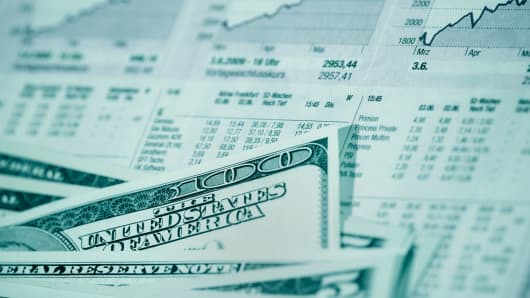What makes a stock expensive? Or cheap?
A lot of people were asking that question this week with Apple shares rocketing past $700. On the surface it looks kind of pricey…for $700 you get one lousy share of Apple, but for the same amount of money, you could get about 30 shares of Facebook stock .
Or consider Berkshire Hathaway, the investing firm controlled by billionaire Warren Buffett. Its main class of shares (the A shares) go for roughly $133,500 a piece. For that, you could get almost 14,500 shares of Dow component Alcoa.
But price tags can be deceiving. And even practiced investors and the business media sometimes lose sight of that.
Remember that a stock is a piece of a company that entitles you to a share of the profits. So for every dollar you spend on a stock, how much profit are you likely to get back?
For that, the pros divide the price of the stock by its earnings and get the price-earnings ratio, or PE. The higher it is, the more you are having to spend up front to get profit down the road. Apple’s PE is about 16. Facebook’s is roughly 130. That makes the social media outfit look mighty pricey. Alcoa at more than 157 also looks very expensive, and in comparison Berkshire’s 19 seems quite reasonable.
Stock junkies also compare individual stock PEs with PEs calculated for their sector in order to get a sense of whether a company is a good buy compared with its peers. If Widget Maker A has a PE of 20, but all its competitors have a PE of 15, it may be a signal that Widget Maker A is overpriced. (More From CNBC: Are You a Market Pro? Take the Quiz and Prove it)
Traders also look at PEs based not just on current earnings, but projected earnings to give them a sense of whether or not the stock is expensive based on what company is likely to make in the future. And this is where individual research can make a difference. If Widget Maker A has a stock price of $12 and is expected to make $0.50 a share over the next year, then its forward looking PE is 24, and it looks like a dog. But if you really think it will make $1.25 a share over the next year, its PE sinks to around 9 and the stock looks like a bargain. (Go a step farther with the PEG ratio)
So should you look only at PEs to make a stock-buying decision? Certainly not. There are many reasons for a PE to be up or down. A company may have little in the way of current profits and therefore have a high PE, but some really great growth prospects. Or a company could be overextended on debt and facing bankruptcy, even though it has a steady profit stream and a low PE.
No, PEs don’t tell the whole story, but they do bring the stock price sticker shock of a “Stock Rockets to ...” headline or a “OMG, Apple just broke $700!” tweet into perspective.
By the way, the general stock market these days has a PE of about 17. That has some saying Apple is still a bargain, despite the $700 price tag. (Others disagree and say Facebook is the buy...watch a discusion about it here.)
More: Test Yourself on Stock Market Jargon
______________________________
Allen Wastler is managing editor of CNBC.com. Follow him on Twitter @AWastler. You can catch his commentary on CNBC Radio. And check out his fiction.



